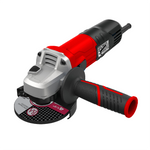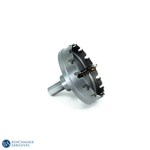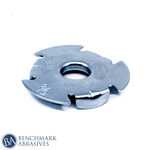
Difference Between Wood File and Metal File

Files are a common tool in the hardware and metalworking industries. Files are a handy tool in the form of long bars with many teeth or cutting edges that are used to smooth out fine bits of a surface from the material, as the name implies. Wood and metal files, often known as rasps and metal files or mill files, are the most frequent types of files.
The similarity between wood and metal files has commonly been misunderstood. The terms "wood files," "cabinet maker files," and "rasps" are all interchangeable. Metal files are known as mill files, and woodworking tools are known as rasps.
Rasps have rougher teeth that are better for cutting wood. A rasp would not work well against a hard metal surface; however, a file would.
Wood File or Rasps
Wood files, popularly known as rasps, are mostly used for woodworking. Rasps are a useful tool that is widely used in the woodworking industry. Rasps are used to shape and smooth a wood's rough edges or surfaces. Rasps come in various shapes, including long, bar-shaped, half-round, and round. It has cutting teeth that help in the coarse cutting. Rasps are naturally aggressive and, hence, produce a smooth finish (without ripping the surface).
Rasps are not suitable for use on metals or other hard surfaces. Unlike wood, the results will vary. A rasp will not clog as easily.
Tips For Using Wood Files Or Rasps
The following are some useful tips for the optimal use of wood files or rasps:
-
Selecting the right file: Choosing the appropriate file: for seamless and successful outcomes, make sure you choose the appropriate file for the project. Choose the file based on the material to be cut. For example: for removing large amounts of material and rough shaping, select coarse rasps. For finishing and smoothing jobs, choose fine rasps. For carving, shaping edges, cabinet making, and more, choose specialty rasps.
-
Work with the grain: When dealing with wood, it is essential to work with the grain. The direction of wood fibers is the same as that of sand or file. Working with grains ensures the cutting action is smoother and more efficient, which produces a more even and cleaner finish. It is mostly suitable for applications like refining surfaces for final coatings or shaping rough stock.
-
Make regular use of a file card: ensure to use a file card regularly to keep your files maintained and up-to-date. Use a file card to remove wood chips from the file’s teeth as they will restrict cutting action which results in clogging faster and reduces shelf life. Therefore, always use a file card for optimal performance of wood files or rasps.
-
Consider a file handle: when working with files, using file handles plays a crucial role by providing a more secure grip which gives more precision and control, minimising the risk of slipping and injury. It also helps in reducing hand fatigue by providing comfort when filing for long hours.
Metal File or Mill File
Mill files are hand tools majorly used for sharpening metals. Mill Files (Bastard Cut) are flat files with a single bastard cut design on one side and a rectangular tapering point on the other for detail work (Two square edges).
For removing metal, a double-cut design is suitable as they are more aggressive. The tooth cut determines the degree of cutting aggression. Smooth, second cut, bastard, and coarse are the four grades available. As a result, depending on the nature of your job, you can choose the file profile and size that best suits your needs. Mill files can be used on wood, but they rapidly become clogged.
Tips For Using Metal Files Or Mill Files
Following are some useful tips for the optimal use of Metal files or mill files:
-
Choosing the correct file: choosing the right metal file depends on factors like the amount of material to be removed, the metal’s hardness and thickness, and the required finish. For example, coarse files are ideal for removing stock material from tough metals like steel, whereas finer files are ideal for finishing and smoothing softer materials like aluminum.
-
Apply lubricants or coolants: ensure to apply lubricants like oil or wax when working with metal files. This acts as a coolant by reducing friction and heat generated during the process. It also helps minimize wear and tear of the files by preventing clogging, ensuring consistent cutting actions, and enhancing shelf life.
-
File in one direction: filing in one direction is a key to success when working with metal files. The best method is to provide uniform pressure while pushing the file ahead into the workpiece, then pull it off on the return stroke. The efficiency of the file is reduced when the direction is reversed by pulling it backward, which can severely dull the teeth. By following this one-directional method, you can achieve more efficient cutting action, which results in a fine and superior finish and helps maintain the file’s sharpness.
Differences Between Wood File and Metal File
|
Basis For Differences |
Wood File (Rasps) |
Metal File (Mill File) |
|
Suitable for |
Wood |
Metals |
|
Teeth & cuts |
Distinct or randomly-spaced |
Close cuts or parallel cuts |
|
Clogging tendency |
Very less |
Very high |
|
No. of variety |
Limited or very less |
Large, depending on the work |
After reading this article, you will understand the differences between wood and metal files. Make wise file selections depending on the tasks you need to do to work productively and successfully.



































































